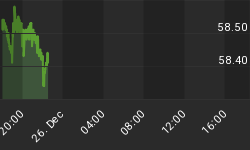We posed the above question because presuming that ethanol causes some brains to dysfunction might be the less offensive approach. Suggesting that most commentaries on ethanol demonstrate near total ignorance on the part of the commentator of how Agri-Production functions might be considered unkind. Few seem to understand that corn for ethanol is not produced in a factory and nor does it pour forth from some Middle Eastern nation at near zero economic costs. Corn for ethanol is produced by farmers. It is a business where the economics is real, and cash flow rules.
Only reason that the U.S. can devote 38% of corn production to ethanol is that U.S. farmers produce that corn. The only reason they produce nearly half of the nations' corn is because ethanol production creates a market for that corn. Eliminate U.S. ethanol production from corn, and farmers would reduce corn plantings by 50-60%. Reality of the situation is that if corn based ethanol production ceased today, the price of corn a year from now would be $1-3 higher than at the present.
Before explaining the above, let us first review the current global corn situation. First, we are talking about the 2013 corn crop year. That begins on 1 September 2012 and runs through 31 August 2013. The USDA forecast of U.S. corn production was reduced by ~56 million tons. Forecast for global corn production was reduced ~56 million tons. Essentially, the shortfall for corn production in the new crop year is in the U.S. The world's situation outside the U.S. is not as dire. Reason that corn prices have spiked so high is partly due to the drought, but more likely caused by allowing large speculative funds to run rampant in the futures market.

Above chart, based on USDA data, portrays ending corn inventories for the 2012 and 2013 crop years. USDA forecast has been sliced three ways, the world, U.S., and world minus U.S. Readily apparent in that graph is that U.S. corn inventories are indeed low. However, the rest of the world has a far more comfortable situation.
U.S. corn exports are important to the global export market for corn. However, U.S. corn exports are not large when compared to total global corn consumption. U.S. corn exports are ~39% of the global corn export market. U.S. corn exports are less than 5% of global corn consumption.Clearly, the world does not have a need to restrict U.S. corn-based ethanol production.
Additionally, global corn consumption is forecast to rise by more than 30 million tons while demand for corn to make U.S. ethanol will be flat. Reality is that the world is eating more everyday, and prices for all foods will rise. Get accustomed to it world!
What would happen if U.S. corn-based ethanol production was suddenly and abruptly halted tonight? Corn prices would indeed fall, perhaps as low as $3 almost immediately. Many farmers in the U.S. would face a dire financial situation in September. Many that have purchased farm land in recent years would not receive their Fall lease payments. Foreclosures on farm land loans could become rampant. Deere and other Agri-Equipment producers would have to order "truckloads" of pink slips.
The second round set of effects would begin in September. That is when the planting season starts in South America, and in particular Argentina and Brazil. In the current crop year the U.S. is forecast to export 39 million tons of corn. Argentina and Brazil are forecast to export 30 million tons.
How would farmers in South America react to these lower prices? Corn plantings would likely fall by 50%, or more. Price of corn would react immediately to those reduced plantings. Corn price would likely double, to $6, as those planting intentions became known.
The next important month would be April 2013 when U.S. farmers would begin planting corn. As the world discovers that U.S. farmers would reduce their corn plantings by 50-60% the price of corn would again move higher. Another rise of at least 50% would be likely, to $9. Not till the early 2014 South American corn harvest could supply improve sufficiently to throttle corn prices. By then, corn prices would be well above $9. Today's corn would become a price bargain.
A wise philosopher once noted that to all complex problems are simple solutions, that are wrong. Ignorant journalists and ill trained economists led by clueless politicians cannot change the reality of today's global Agri-Food markets. Food is now in permanent short supply. The real answer is to ignore all of the articles being written on ethanol. Spend your time instead learning how to invest in the greatest peace time Agri-Food Super Cycle in all of history.
6th U.S. Agricultural Land As An Investment is to be released in September. This report is the premier, and only independent, analysis of the returns produced by U.S. agricultural land. Any investors considering an investment in farm land, the real kind not that on FarmVille, should have this report. See our web site for details.
AGRI-FOOD THOUGHTS is from Ned W. Schmidt,CFA,CEBS, publisher of The Agri-Food Value View, a monthly exploration of the Agri-Food grand cycle being created by China, India, and Agri-Energy. To contract Ned or to learn more, use this link: www.agrifoodvalueview.com















